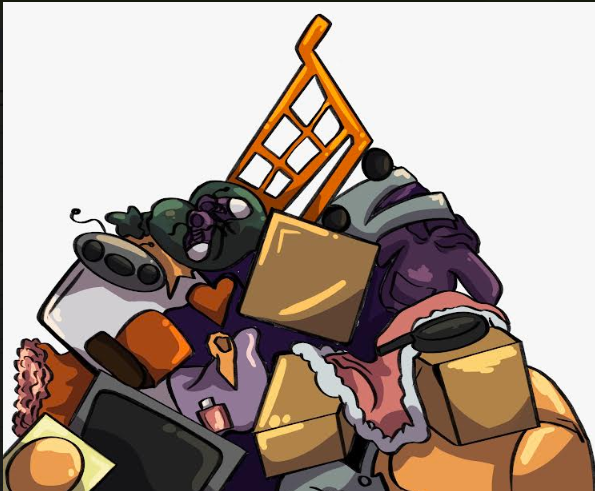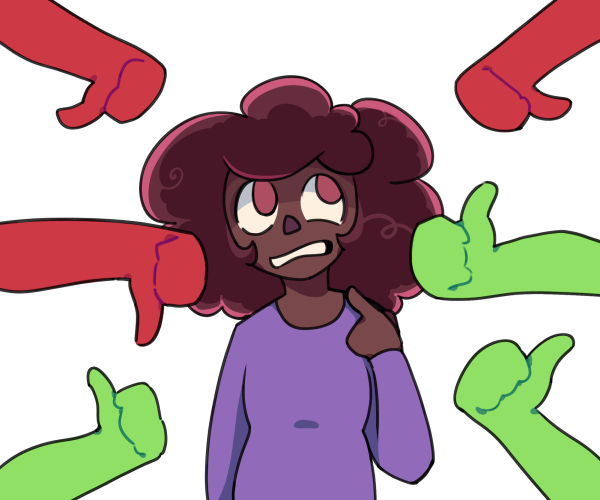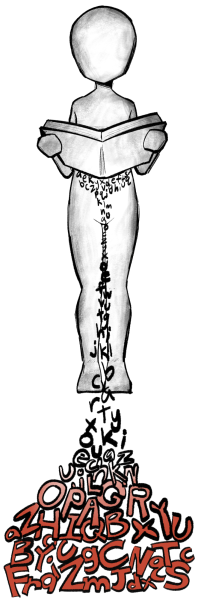Kendrick Lamar merges personal narrative, denunciations of society
April 24, 2015
To those who compared Kendrick Lamar’s sophomore effort, good kid, m.A.A.d city, to a movie I would say that Lamar’s latest album, To Pimp a Butterfly, is more of a hip-hopera. The album runs for 79 minutes with Lamar crooning and rapping about race, fame, class and his personal struggles.
It is a genre-bending album that incorporates elements of jazz, soul, reggae and funk into Lamar’s rapping. The mood set up by this is dark, critical and reflective.
To Pimp a Butterfly is by no means an easy listen. It’s multilayered, both musically and emotionally, and that makes it inherently hard to tackle. In order to appreciate it you have to engage.
The sixteen-song tracklist begins distinctly with the sounds of a scratchy vinyl record on “Wesley’s Theory”. It quickly transitions into a funky beat with the intro to the song spoken by funk icon George Clinton. It furthers the metaphor of hip hop artists as caterpillars that are cocooned by the music industry and pimped out as butterflies.
Lamar is aptly positioned to tell us this story because he has climbed up the rungs from his humble West Coast Compton origins to his hip-hop stardom. He has already told us his personal story in his previous works; To Pimp a Butterfly deals with Lamar’s dissatisfactions with society. His own pimping is used only as a source of inspiration. As Lamar deals with these realities, the album’s plot and progression twist and turn to match Lamar’s emotions.
The songs all dedicate themselves to challenging different ideas, adding to the narrative woven together by Lamar. “Institutionalized” and “These Walls” discuss the rap industry’s institutionalization or cocooning of these caterpillars. “Momma” and “Hood Politics” appear on the album as Lamar’s return to his Compton roots, reminiscing about his position of celebrity. Meanwhile, “How Much a Dollar Cost” has Lamar pondering the value of money in relation to power. “Complexion (A Zulu Love)” and “The Blacker the Berry” engage the ideas of race with a more aggressive tone.
One of the most important tracks is the third single and one of my personal favorite songs, “King Kunta”. This track nods to the story of an 18th century slave whose foot was cut off upon trying to escape the plantation. Lamar juxtaposes this idea with that of being a king and running the rap game even as others try to cut his foot off. By combining opposing ideas of being a king and a slave, Lamar creates a powerful song about black empowerment.
The production is also extraordinary, with Flying Lotus, ThunderCat, Sounwave and Pharrell Williams as a few of my favorite credited producers on this album. The work shows through when you peel back all the layers of detail packed into each song.
While the album included the work of many producers, Lamar limited the number of features. However, some of the features elevated the album like with George Clinton bringing the funk, Snoop Dogg and his Slick Rick imitation and Ronald Isley bringing in some great old-school R&B. Personally, I think that these artists could have brought even more to the album had they not been limited to just intros, bridges and outros.
Any culpability extended to Lamar is that he perhaps reached too far in this album. Maybe Lamar tried to juggle too much in this genre-mixing album and ended up only half-heartedly executing it while losing a piece of his own authenticity.
At the same time, To Pimp a Butterfly is the same style that we expected out of Kendrick Lamar. It is reflective storytelling that relates personal anecdotes to broader criticisms of society. After giving an honest listen To Pimp a Butterfly, it is clear that it doesn’t lack Lamar’s unique perspective, but it comes together to make a complete story.












